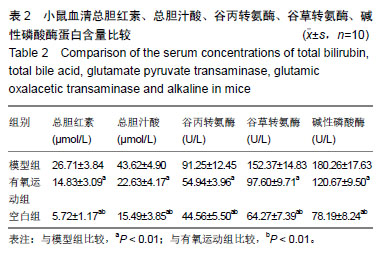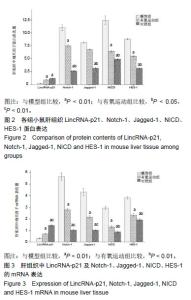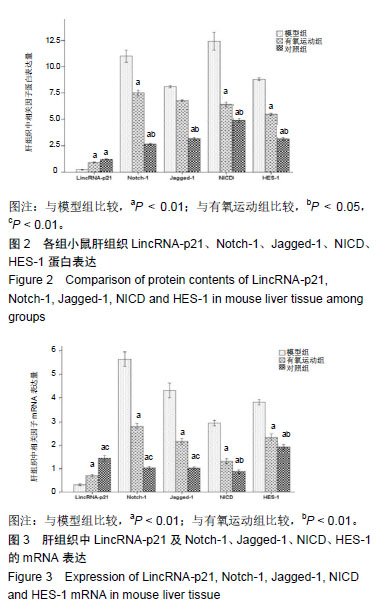| [1]Lin YC,Wang FS,Yang YL,et al.MicroRNA-29a mitigation of toll-like receptor 2 and 4 signaling and alleviation of obstructive jaundice-induced fibrosis in mice.Biochem Biophys Res Commun.2018;496(3):880-886.[2]Wu H,Jin M,Han D,et al.Protective effects of aerobic swimming training on high-fat diet induced nonalcoholic fatty liver disease: regulation of lipid metabolism via PANDER-AKT pathway.Biochem Biophys Res Commun. 2015;458(4):862-8[3]Yu F,Zhou G,Huang K,et al.Serum lincRNA-p21 as a potential biomarker of liver fibrosis in chronic hepatitis B patients.J Viral Hepat. 2017;24(7):580-588.[4]Bansal R,van Baarlen J,Storm G,et al.The interplay of the Notch signaling in hepatic stellate cells and macrophages determines the fate of liver fibrogenesis.Sci Rep.2015;5(07):172-182.[5]Katz SC,Ryan K,Ahmed N,et al.Obstructive jaundice expands intrahepatic regulatory T cells, which impair liver T lymphocyte function but modulate liver cholestasis and fibrosis.J Immunol.2011;187(3): 1150-1156.[6]Wang B,Sun MY,Long AH,et al.Yin-Chen-Hao-Tang alleviates biliary obstructive cirrhosis in rats by inhibiting biliary epithelial cell proliferation and activation.Pharmacogn Mag.2015;5(42):417-425.[7]朱丽丽.绿原酸对梗阻性黄疸大鼠肝胆转运系统的影响及其机制研究[D].大连:大连医科大学,2016:14-16.[8]Wu SY,Cui SC,Wang L,et al.1.8β-Glycyrrhetinic acid protects against α-naphthylisothiocy cholestasis through activation of the Sirt1/FXR signaling pathway.Acta Pharmacol Sin.2018;25(12):154-159.[9]Lv Y,Yue J,Gong X,et al.Spontaneous remission of obstructive jaundice in rats: Selection of experimental models[J].Exp Ther Med.2018;15(6):5 297-301.[10]Wang Q,Li ZX,Liu BW,et al.Altered expression of differential gene and lncRNA in the lower thoracic spinal cord on different time courses of experimental obstructive jaundice model accompanied with altered peripheral nociception in rats.Oncotarget.2017;8(62):106098-106112.[11]Vanderpool C,Sparks EE,Huppert KA,et al.Genetic interactions between hepatocyte nuclear factor-6 and Notch signaling regulate mouse intrahepatic bile duct development in vivo.Hepatology. 2012;55(1): 233-243.[12]Wang Y,Shen RW,Han B,et al.Notch signaling mediated by TGF-β/Smad pathway in concanavalin A-induced liver fibrosis in rats.World J Gastroenterol. 2017;23(13):2330-2336.[13]Chen Y,Zheng S,Qi D,et al.Inhibition of Notch signaling by a γ-secretase inhibitor attenuates hepatic fibrosis in rats.PLoS One.2012;7(10):e46512.[14]Mu YP,Zhang X,Fan WW,et al.Mechanism of Astragaloside prevents cholestatic liver fibrosis through inhibition of Notch signaling activation. Zhonghua Gan Zang Bing Za Zhi.2017;25(8):575-582.[15]阮凌,肖国强,曹姣,等.运动和白藜芦醇对抑制NAFLD大鼠肝细胞凋亡的作用及机制研究[J].西安体育学院学报, 2014,31(6),728-734.[16]荆西民,岳静静,吴卫东,等.有氧运动对非酒精性脂肪肝大鼠肝组织AMPK蛋白活性的影响[J].中国运动医学杂志, 2015,34(7),653-657.[17]赵军,史长征,徐晓阳,等.基于SIRT1轴的线粒体增殖和自噬通路探讨有氧运动对NASH大鼠脂肪性肝炎的影响[J].北京体育大学学报, 2016,39(1):68-71.[18]Linden MA,Sheldon RD,Meers GM,et al.Aerobic exercise training in the treatment of non-alcoholic fatty liver disease related fibrosis.J Physiol. 2016;594(18):5271-5284.[19]Yu F,Zhou G,Huang K,et al.Serum lincRNA-p21 as a potential biomarker of liver fibrosis in chronic hepatitis B patients.J Viral Hepat.2017.24(7): 580-588.[20]Lin L,Cai WM,Qin CJ,et al.Intervention of TLR4 signal pathway cytokines in severe liver injury with obstructive jaundice in rats.Int J Sports Med. 2012;33(7):572-579. |





